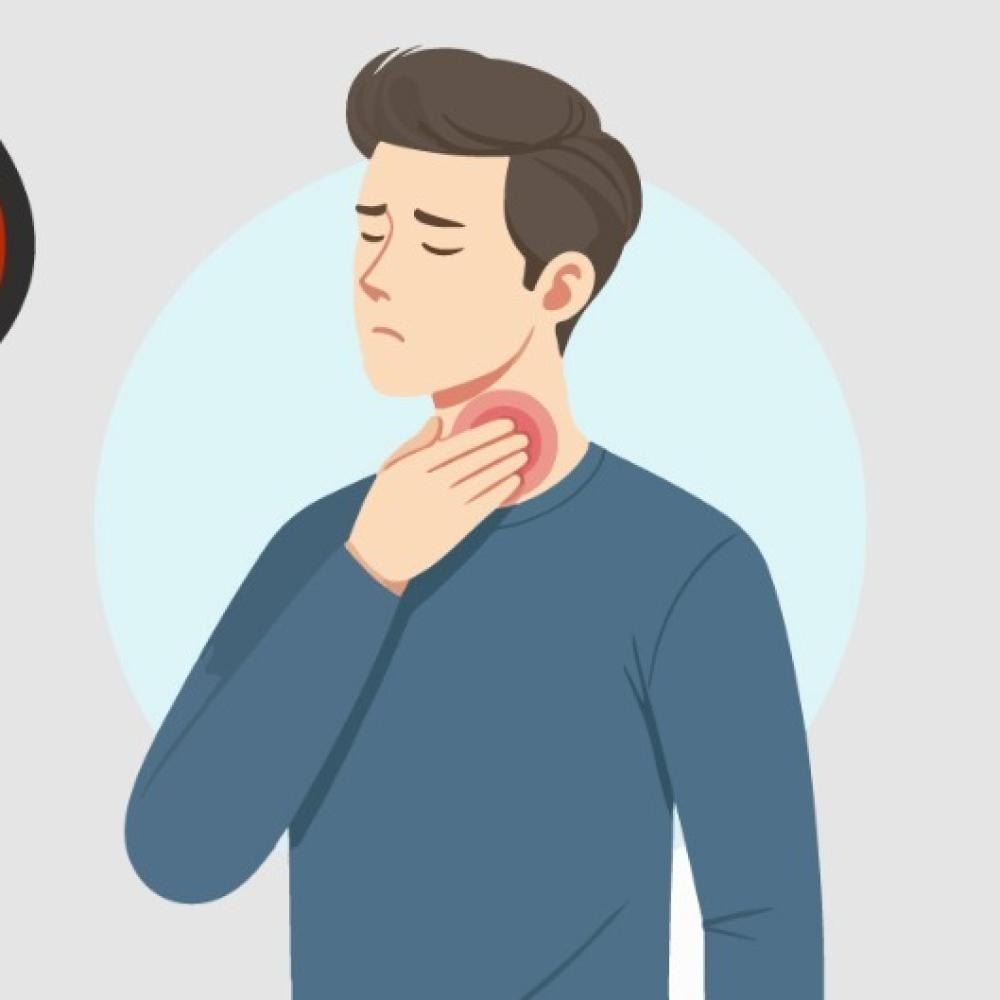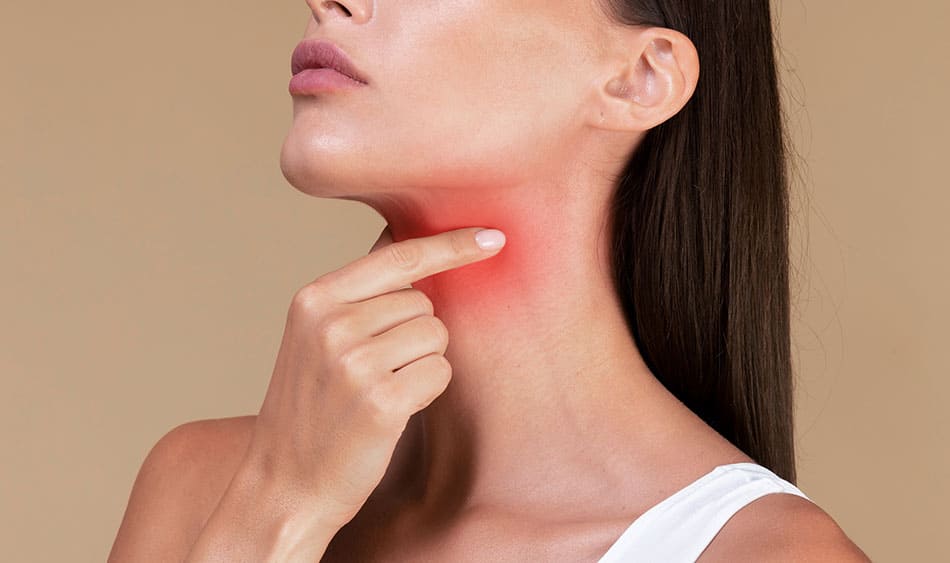

Welcome to Our Informative Guide on Vaping and Throat Health
Discover essential insights into the link between vaping and throat health in our comprehensive guide. Understanding the impact of vaping on throat health is crucial for anyone considering e-cigarette use. Is vaping bad for your throat? We delve into this question with expert opinions to weigh in on whether vaping can lead to chronic throat issues.
Explore the silent consequences of vaping with a focus on throat pain and other effects often overlooked by users. Vaping and throat pain—what are the hidden risks you should be aware of? Our in-depth look reveals insights into how e-cigarettes can cause irritation and pain, putting your throat at risk.
We also compare vaping vs. smoking: which is worse for your throat health? Our analysis provides clarity on the potential dangers and side effects of vaping. Protect your throat with practical tips for vapers to avoid discomfort and maintain better throat health.
Arm yourself with knowledge as we explore the side effects of vaping. Is your throat at risk? Gain a comprehensive understanding and stay informed to make smart choices for your health. Join us in unpacking the medical perspective on vaping and safeguard your throat today.

Vaping and Throat Pain: The Hidden Risks You Should Be Aware Of
Recognizing Throat Pain Symptoms from Vaping
For many, vaping is seen as a less harmful alternative to traditional smoking. However, it's crucial for vapers to recognize that throat pain can be a sign of something more serious lurking beneath the surface. Symptoms of throat pain from vaping may include:
- Sore throat: A general discomfort that may feel dry or scratchy.
- Painful swallowing: Difficulty when swallowing food or liquids.
- Irritation or burning sensation: Particularly noticeable after vaping sessions.
- Persistent cough: Especially if you notice it getting worse over time.
A personal anecdote shared by a former vaper highlights this issue: “At first, I thought my sore throat was just a cold. But it lingered longer than expected. It wasn’t until I connected it to my vaping habit that I realized I needed to take action.”
Impact of Chemical Components on Throat Health
The chemical compounds in e-liquids can significantly impact throat health. Many vapers may not be aware of what they’re inhaling. Key ingredients to watch out for include:
- Propylene Glycol: Often used to create the throat hit, it can lead to irritation and dryness.
- Vegetable Glycerin: Although generally considered safer, it can still cause throat discomfort when combined with certain flavors or in high amounts.
- Flavoring Agents: Some flavorings can be particularly harsh. For instance, cinnamon and peppermint can contribute to throat irritation.
Understanding how these chemicals interact with the body is essential. A study revealed that vapers are at a much higher risk for throat-related issues compared to non-vapers. Therefore, it's advisable to monitor how your throat reacts to vaping and consider adjustments accordingly.
Can Vaping Lead to Chronic Throat Issues? Experts Weigh In
Long-Term Effects of Vaping on Throat Health
Moving from short-term discomfort, it's important to consider whether vaping can lead to chronic throat issues. Recent studies show that long-term exposure to e-cigarette vapors can result in persistent irritation and damage to the throat's mucosal lining. Users often report symptoms that may worsen over time, including:
- Chronic irritation: A constantly scratchy or sore throat that does not seem to improve.
- Increased coughing: A reflex action that may become frequent and bothersome.
- Difficulty in tasting: Altered taste sensation, impacting overall eating and drinking experiences.
One vape enthusiast shared their experience: "What started as a casual habit quickly turned into a recurring sore throat. I never thought it could be the vaping. Now, I see the link."
Expert Opinions on Chronic Throat Conditions
Experts are increasingly vocal about the potential chronic throat conditions linked to vaping. According to ENT specialists, the inhalation of vaporized chemicals can lead to changes in throat tissue, making it susceptible to inflammation and infection. Here are some key takeaways based on expert assessments:
- Chronic Bronchitis Symptoms: Vaping not only affects the throat but can mimic chronic bronchitis symptoms due to irritation of the respiratory tract.
- Risk of Infections: A compromised throat lining can increase susceptibility to various infections, including potential vaping throat infections.
- Inflammation Concerns: Long-term use may lead to conditions such as laryngitis or pharyngitis, which can significantly impact quality of life.
Understanding these insights is crucial for vapers who wish to maintain their throat health. Staying informed and taking proactive steps can help minimize risks associated with this trend.
The Link Between Vaping and Throat Discomfort: A Comprehensive Guide
Chemical Irritants in E-Liquids
Transitioning from the observations on chronic throat issues, it’s essential to delve into the specific chemical irritants found in e-liquids that contribute to throat discomfort. Many vapers may not realize that these substances can irritate their airways. Here are some common culprits:
- Nicotine: While it is often the primary addictive substance, nicotine can lead to throat irritation and dryness.
- Diacetyl: Previously linked to "popcorn lung," this flavoring chemical can cause serious respiratory issues when inhaled over time.
- Acrolein: This potent irritant, often found in e-liquids, has been shown to cause inflammation in the throat and lungs.
- Heavy Metals: Some e-cigarettes can release metals like lead and cadmium from heated coils, adding to throat discomfort.
Many vapers have shared stories reflecting their struggles; one remarked, “I never connected my throat pain to what I was inhaling. Once I switched to nicotine-free e-liquids, the irritation decreased significantly.”
Potential Health Concerns for Throat Discomfort
Recognizing throat discomfort is just the first step. The potential health concerns and implications linked to vaping can be alarming. Chronic exposure to vapor can lead to:
- Increased mucous production: This can result in a feeling of congestion and discomfort.
- Throat infections: With continual irritation, there's a heightened risk of bacterial or viral infections taking hold.
- Long-term damage: Continuous irritation can cause changes in throat tissue, resulting in permanent damage over time.
These health concerns underscore the necessity for vapers to be cautious and monitor their throat health closely. Creating awareness around the ingredients in e-liquids is vital for making informed choices. Ultimately, understanding these links can empower vapers to adopt safer habits and protect their health.
Exploring the Side Effects of Vaping: Is Your Throat at Risk?
Common Throat-Related Side Effects of Vaping
Continuing from our discussion on the health implications of vaping, it is vital to shed light on the common throat-related side effects that many users experience. These symptoms can range from mild to severe and can significantly impact daily life. Here are some side effects to be aware of:
- Sore throat: A frequent complaint, often described as a dry or scratchy sensation.
- Hoarseness: Changes in voice quality, which may be alarming for those who rely on their voice for work or social interactions.
- Coughing fits: An irritating cough that may worsen, particularly after vaping sessions.
- Phlegm Production: Increased mucus, leading to a feeling of congestion in the throat.
A former vaper shared, “I brushed off my sore throat for weeks, thinking it was just allergies. It wasn't until my voice started to go hoarse that I realized I needed to pay attention.”
Monitoring Throat Health While Vaping
Being proactive about throat health is essential for anyone who chooses to vape. Here are some tips to help monitor and manage throat discomfort:
- Keep a symptom diary: Document when symptoms occur and their intensity to identify patterns or triggers.
- Stay hydrated: Ensure you're drinking enough water to combat dryness; hydration helps maintain throat moisture.
- Limit flavor variety: Some flavors can be harsher on the throat. Experiment with less irritating options.
- Consult healthcare professionals: If discomfort persists, seeking advice from a healthcare provider can provide insight and solutions.
Maintaining awareness of these symptoms and adopting prevention strategies can help vapers to reduce throat-related side effects. Ultimately,
being mindful of one's throat health can lead to a much more enjoyable vaping experience.

Throat Health and Vaping: How E-Cigarettes Can Cause Irritation and Pain
Mechanism of Throat Irritation from Vaping
Continuing our exploration of throat health complications related to vaping, it’s essential to understand the underlying mechanisms that can lead to irritation and pain. When vapor is inhaled, it travels through the throat and into the lungs, exposing sensitive tissues to various irritating substances. Here are key factors contributing to throat irritation:
- Heating Elements: E-cigarettes use coils that heat e-liquids. This process can release harmful chemicals, leading to inflammation in the throat.
- Chemical Composition: E-liquids often contain propylene glycol and vegetable glycerin, which, although generally recognized as safe in food, can cause dryness and irritation when vaporized and inhaled.
- Temperature of Vapor: The heat from the vapor can also strip away moisture, leaving the throat feeling raw and uncomfortable.
A vaper shared, “I noticed my throat hurt worse when I used high-temperature settings. It felt like I'd just inhaled burning smoke!”
Understanding Symptoms of Throat Pain
Recognizing the symptoms of throat pain is vital for vapers to take action early. Some common signs to look out for include:
- Dryness: A persistent feeling of dryness, often accompanied by discomfort.
- Difficulty Swallowing: A noticeable pain when swallowing, indicating possible inflammation.
- Deep, Raspy Sounds: An indication of potential laryngeal irritation resulting from prolonged exposure to vapor.
It’s important to listen to your body. Ignoring these signals can lead to more significant issues down the line. If throat pain persists or intensifies, consulting with a healthcare professional can provide clarity and ensure that throat health is safeguarded. Staying informed and proactive will go a long way in enjoying a safer vaping experience.
Vaping vs. Smoking: Which is Worse for Your Throat Health?
A Comparative Analysis of Vaping and Smoking on Throat Health
After delving into the specifics of throat health complications, it’s time to address a pressing question: Is vaping better or worse for your throat than smoking traditional cigarettes? While both habits pose risks, there are distinct differences in their effects on throat health.
- Chemical Exposure: Cigarettes contain thousands of harmful chemicals, including tar and formaldehyde, which can severely damage throat tissue and lead to chronic conditions. In contrast, e-cigarettes primarily vaporize fewer substances, potentially reducing direct harm, although many e-liquids still contain irritants.
- Irritation Levels: Smokers often experience persistent throat irritation, cough, and sore throat due to the hot smoke and toxic byproducts. Vapers may also experience irritation, but it is generally less severe unless using harsh flavors or high nicotine content.
A transitioning smoker recounted, “I thought switching to vaping would save my throat, but I still had that raw feeling. It wasn’t without its consequences.”
Identifying Potential Risks and Benefits
When it comes to understanding the risks and benefits of both methods, a balanced view is necessary.
- Potential Benefits of Vaping:
- Fewer Toxic Chemicals: For some, e-liquids can present a reduced risk compared to cigarettes, but this is not without caveats.
- Ability to Control Ingredients: Vapers often have the option to choose from a range of nicotine levels, flavors, and base liquids.
- Risks of Vaping:
- Long-Term Unknowns: The long-term effects of vaping are still largely unstudied, raising concerns about chronic throat issues.
Smokers looking to switch should weigh these aspects thoroughly. In conclusion, neither option is entirely safe, so understanding the nuances between vaping and smoking can help individuals make informed choices about their throat health.
The Silent Consequences of Vaping: Throat Pain and Other Effects
Unforeseen Consequences of Vaping on Throat Health
Continuing our discussion about the risks associated with vaping, it’s crucial to recognize the often-overlooked consequences that can occur, particularly regarding throat health. Many vapers may find themselves experiencing symptoms they never anticipated. Some unforeseen consequences include:
- Increased Sensitivity: Over time, the throat may become more sensitive to allergens or irritants, leading to heightened reactions to dust, smoke, or even weather changes.
- Chronic Inflammation: Continuous exposure to vapor can cause sustained inflammation in the throat, resembling chronic conditions like laryngitis.
- Compromised Immune Response: Irritating the throat frequently can weaken local immune defenses, leading to a higher likelihood of infections.
One vaper shared, “At first, vaping felt like a fresh start from smoking, but soon I was dealing with a constant sore throat that I hadn’t anticipated!”
Managing and Addressing Throat Pain
For those experiencing throat pain due to vaping, it’s important to take proactive steps to manage and address these symptoms. Here are some strategies to consider:
- Hydration is Key: Drinking plenty of water helps keep the throat moist and can alleviate dryness and irritation.
- Saltwater Gargle: A simple remedy is gargling with warm salt water, which can reduce inflammation and soothe throat discomfort.
- Choose Lower Nicotine E-Liquids: If you're sensitive to throat irritation, opting for lower nicotine levels may lessen the harshness while vaping.
- Consult Healthcare Professionals: Regular check-ups with an ENT specialist can provide insights into throat health and suggest tailored remedies.
By understanding these unexpected consequences and taking targeted action, vapers can mitigate the risks and take charge of their throat health. Being vigilant and proactive will enhance the overall vaping experience, making it a more manageable choice.
Protecting Your Throat: Tips for Vapers to Avoid Discomfort
Practical Measures to Safeguard Throat Health
Transitioning from the previous section, it’s now essential to discuss practical measures that vapers can adopt to protect their throat health. Taking proactive steps can significantly minimize discomfort and irritation while enhancing the overall vaping experience. Here are some effective strategies:
- Stay Hydrated: Drinking water consistently throughout the day can help keep the throat lubricated. Herbal teas and warm broths are also excellent choices.
- Opt for Quality E-Liquids: Choose reputable brands that do not contain harmful additives. Look for e-liquids with fewer chemicals and avoid those with harsh flavorings that may irritate the throat.
- Experiment with Nicotine Levels: Reducing nicotine levels may lessen the throat hit and irritation associated with vaping. This adjustment can significantly improve comfort.
One former vaper recalled, "Making small changes, like drinking more water and switching to a lighter e-liquid, transformed my experience. I never thought something so simple could make such a difference!"
Best Practices for Throat Care While Vaping
Alongside practical measures, adopting best practices for throat care while vaping is vital. Here are some recommendations:
- Limit Vaping Frequency: Take breaks between vaping sessions to give the throat time to recover and reduce irritation.
- Clean Your Device Regularly: Maintaining a clean vaporizer or e-cigarette can prevent the buildup of harmful residues that can affect throat health.
- Choose Throat-Friendly Flavors: Avoid overly spicy or mentholated e-liquid flavors, which can be harsh and lead to irritation.
By incorporating these tips and best practices into daily routines, vapers can take significant steps toward preserving their throat health. Awareness and preventative measures are key components in enjoying a comfortable vaping experience while minimizing unwanted discomfort. Taking ownership of one’s vaping habits can lead to lasting improvements in throat wellness.
Is Vaping Bad for Your Throat? Understanding the Medical Perspective
Current Research Findings on Vaping and Throat Health
As we delve into whether vaping can be detrimental to throat health, it’s essential to look at the current research findings. Numerous studies have explored the effects of e-cigarettes on respiratory and throat health, revealing some concerning insights:
- Inflammation and Irritation: Research indicates that vaping can lead to increased inflammation in the throat, similar to traditional smoking. The vapor can irritate the sensitive mucous membranes, causing discomfort.
- Chemical Exposures: Many e-liquids contain chemicals like diacetyl, which has been linked to respiratory issues. Even low concentrations can affect throat health over long-term exposure.
- Increased Infection Risks: Studies have shown that vaping may compromise local immunity in the throat, making users more susceptible to infections.
A former smoker who switched to vaping shared, “Initially, I thought I was making a healthier choice, but I learned through research that my throat wasn’t as safe as I believed!”
Implications for Vapers and Healthcare Professionals
Understanding the medical perspective on vaping is crucial for both users and healthcare professionals. For vapers, awareness of the potential risks is essential in making informed choices. Here are some implications to consider:
- Routine Monitoring: Vapers should pay close attention to any changes in throat health and seek medical advice if discomfort persists.
- Informed Decision-Making: Knowledge about the contents of e-liquids can empower users to make safer choices, such as avoiding certain additives.
- Professional Guidance: Healthcare professionals play a vital role in educating vapers about the risks associated with vaping, while also promoting healthier alternatives if needed.
In conclusion, while vaping may appear to be a less harmful alternative to smoking, the evidence suggests that it still poses significant risks to throat health. It is imperative for vapers to stay informed and engaged with their health choices, ensuring they are taking proactive steps towards safeguarding their well-being.

The Link Between Vaping and Throat Discomfort: A Comprehensive Guide
The Link Between Vaping and Throat Discomfort: A Comprehensive Guide
Vaping has surged in popularity over the past decade as an alternative to traditional smoking. While many users tout its benefits, such as reduced exposure to certain harmful chemicals found in combustible cigarettes, vaping is not without its own set of potential health concerns. One common issue reported by vapers is throat discomfort. This comprehensive guide explores the connection between vaping and throat discomfort, examining the underlying causes, symptoms, preventive measures, and considerations for those experiencing discomfort.
1. Understanding Vaping and Its Components
a. What is Vaping?
Vaping involves inhaling vapor produced by an electronic device, commonly known as an e-cigarette or vape pen. These devices heat a liquid (e-liquid or vape juice) to create vapor, which the user inhales.
b. Components of E-Liquids
E-liquids typically consist of the following ingredients:
- Propylene Glycol (PG): A carrier agent that produces the throat hit similar to smoking.
- Vegetable Glycerin (VG): Produces thicker vapor and a smoother inhale.
- Nicotine: An addictive substance found in varying concentrations.
- Flavorings: Added to enhance the taste of the vapor.
2. Causes of Throat Discomfort from Vaping
a. High Nicotine Levels
- Throat Irritation: High concentrations of nicotine can cause irritation and dryness in the throat.
- Addiction and Overuse: Higher nicotine levels may lead to more frequent vaping, exacerbating throat discomfort.
b. Propylene Glycol (PG) Sensitivity
- Irritant Properties: PG is known to be a potent irritant, which can dry out mucous membranes and cause soreness.
- Allergic Reactions: Some individuals may experience allergic reactions to PG, resulting in throat irritation.
c. High-Temperature Vaping
- Heat Damage: Vaping at high temperatures can burn the throat, leading to discomfort and irritation.
- Overheating Devices: Devices that do not regulate temperature effectively can produce excessively hot vapor.
d. Dehydration
- Fluid Loss: Vaping can contribute to dehydration, which in turn dries out the throat.
- Lack of Hydration: Users who do not adequately hydrate themselves may experience increased throat dryness.
e. Inadequate Wicking
- Dry Hits: Poor wicking can cause the coil to overheat, producing burnt-tasting vapor that irritates the throat.
- Residue Build-Up: Accumulation of e-liquid residue can affect vapor quality and throat comfort.
f. Flavors and Additives
- Chemical Irritants: Some flavorings contain chemicals that can irritate the throat.
- Sensitizing Ingredients: Certain additives may cause sensitivity or allergic reactions, leading to discomfort.
3. Symptoms of Throat Discomfort from Vaping
- Dryness: A persistent dry sensation in the throat.
- Soreness: Aching or painful throat muscles.
- Scratchiness: A rough or scratchy feeling when swallowing or speaking.
- Burning Sensation: A feeling of heat or burning in the throat.
- Hoarseness: Changes in voice quality due to irritation.
- Coughing: Frequent coughing fits triggered by throat irritation.
4. Preventive Measures and Solutions
a. Adjust Nicotine Levels
- Lower Nicotine Concentration: Opt for e-liquids with lower nicotine levels to reduce throat irritation.
- Gradual Reduction: Gradually decrease nicotine intake to minimize withdrawal symptoms and throat discomfort.
b. Balance PG and VG
- Higher VG Ratios: Choose e-liquids with a higher VG content to produce smoother vapor and reduce throat irritation.
- Avoid High PG: Limit the use of high-PG e-liquids if you are sensitive to PG.
c. Control Vaping Temperature
- Temperature-Regulated Devices: Use devices that allow you to control and monitor vaping temperature.
- Lower Settings: Set your device to lower temperatures to prevent burning and irritation.
d. Maintain Hydration
- Drink Water: Increase water intake to keep your throat hydrated.
- Avoid Diuretics: Limit the consumption of diuretics like caffeine and alcohol, which can contribute to dehydration.
e. Ensure Proper Wicking
- Regular Maintenance: Clean and maintain your vaping device to ensure proper wicking and prevent dry hits.
- Quality Wicks: Use high-quality wicks designed for your specific device to ensure efficient e-liquid absorption.
f. Choose Safe Flavors and Additives
- Avoid Irritants: Select e-liquids with minimal chemical additives and avoid harsh flavors that can irritate the throat.
- Test Flavors: Experiment with different flavors to identify which ones cause less irritation.
g. Take Vaping Breaks
- Limit Usage: Reduce the frequency and duration of vaping sessions to give your throat time to recover.
- Switch to Lower-Intensity Vaping: Use lower-power settings or less intense vaping methods to minimize irritation.
5. When to Seek Medical Advice
If throat discomfort persists despite making adjustments to your vaping habits, it is advisable to consult a healthcare professional. Persistent irritation could indicate underlying issues or lead to more serious health concerns if not addressed properly.
6. Alternatives to Vaping for Throat Comfort
a. Nicotine Replacement Therapies (NRT)
- Options: Patches, gum, lozenges, and inhalers can provide nicotine without the throat irritation associated with vaping.
- Benefits: NRTs are clinically proven to help reduce nicotine cravings and support smoking cessation.
b. Gradual Reduction Strategies
- Step-Down Approach: Gradually reduce the frequency and intensity of vaping to allow your throat to heal.
- Behavioral Support: Seek support from cessation programs or counseling to manage cravings and reduce reliance on nicotine.
7. Conclusion
While vaping is often perceived as a safer alternative to traditional smoking, it is not without its own set of health concerns, particularly regarding throat discomfort. Factors such as high nicotine levels, PG sensitivity, high-temperature vaping, dehydration, inadequate wicking, and the use of certain flavors can contribute to irritation and pain in the throat. By making informed choices—such as adjusting nicotine levels, balancing PG and VG ratios, controlling device temperature, maintaining hydration, ensuring proper wicking, and selecting safe flavors—users can mitigate these effects and enjoy a more comfortable vaping experience.
However, it is crucial to remain vigilant about the signs of throat discomfort and seek medical advice if symptoms persist. Exploring alternatives to vaping, such as nicotine replacement therapies, can also provide relief and support for those looking to reduce or quit nicotine consumption altogether.
Key Takeaways:
- Monitor Nicotine Intake: Use appropriate nicotine levels to prevent throat irritation.
- Balance E-Liquid Composition: Opt for higher VG and lower PG ratios to reduce dryness and irritation.
- Maintain Device Integrity: Ensure proper wicking and temperature control to avoid burnt hits.
- Stay Hydrated: Regularly drink water to keep your throat moist and comfortable.
- Choose Quality Flavors: Select e-liquids with safe, minimal additives to minimize irritation.
By understanding the link between vaping and throat discomfort and implementing these strategies, users can enhance their vaping experience while safeguarding their throat health.
If you have any further questions or need personalized advice regarding vaping and throat health, feel free to ask!

OXVA is a leading brand in the field of manufacturing vape products.
Elf Bar is a leading e-cigarette brand, known for offering ready-to-use vape devices.
Geek Vape is one of the leading companies in the vape devices and related accessories industry.
DZRT Nicotine Pouches is one of the brands specialized in nicotine pouches.
Ripe Vapes is a well-known company in the manufacture of electronic cigarettes and e-liquids (flavors).
Roll Upz is a well-known brand in the e-liquid industry.
Grand Vape (or Grand) is one of the companies specialized in manufacturing vape devices and electronic liquids.
Browse by most popular vape brands
Gummy is a specialty brand.
SMOK is one of the most popular brands.
Sams Vape is a well known brand.
DR.VAPES Dr.Vapes is one of the well-known companies
JUCY JUCY Flavors are a range of flavors used in electronic vaping.
Browse by most popular vape brands
Products of the brand Mood Vape Company
Disposable disposable syringes
Electronic vape and hookah devices
Salt and vape flavors for molasses and electronic hookah
Accessories, coils, supplies and pods for electronic devices

